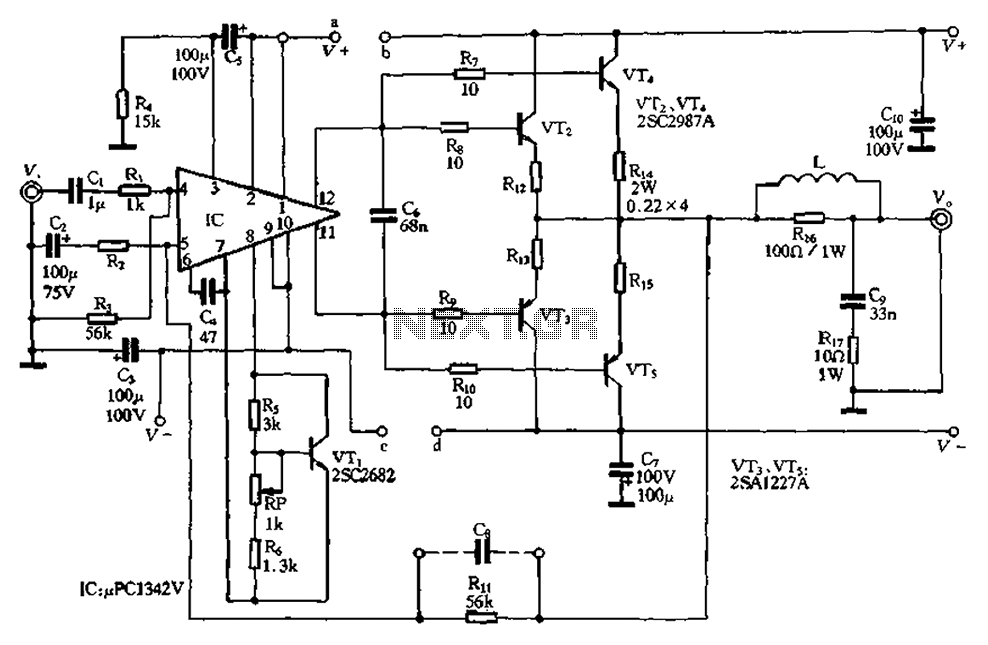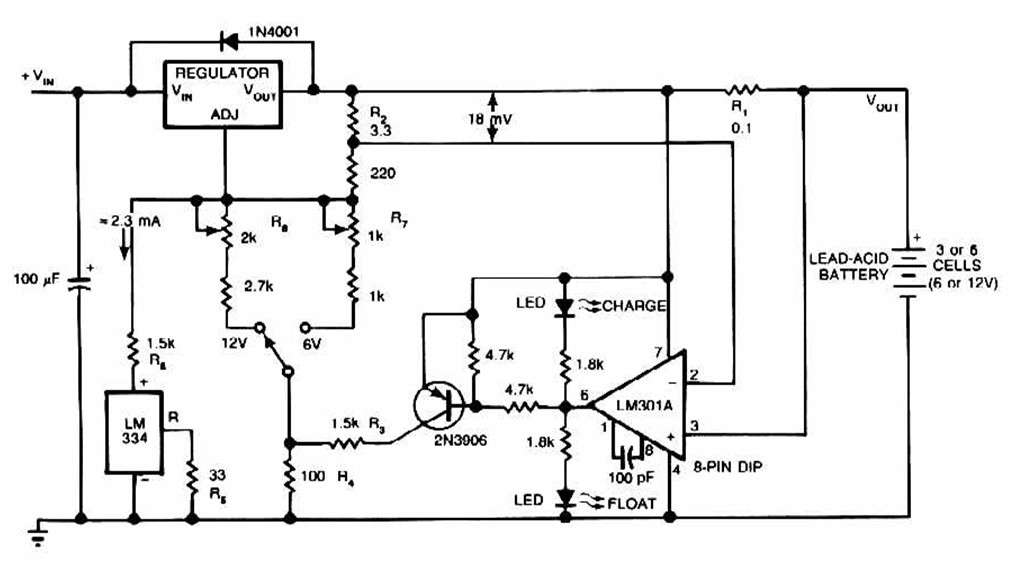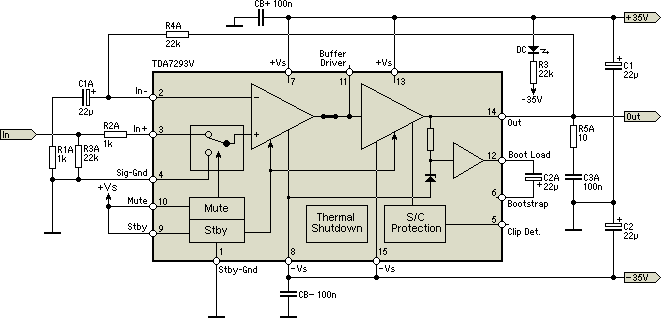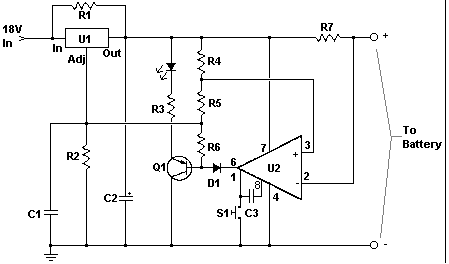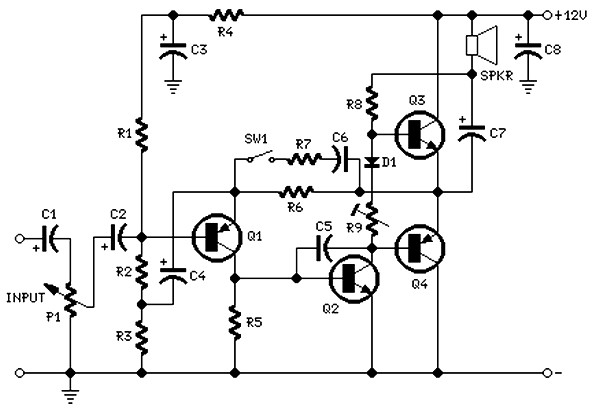
70w stk amplifier schematic

This amplifier circuit utilizes three voltage levels: positive, negative, and ground, with a maximum voltage of approximately 55V DC. The circuit can accommodate several integrated circuits (ICs), including STK 030, 058, 075, 077, 078, 080, 082, 083, 084, and 086. Each of these ICs may have varying maximum voltage ratings or power output specifications. This amplifier is suitable for home use, delivering a soft and pleasant sound quality. The maximum output is 70W at an 8-ohm impedance, with the highest output achieved using the STK086 IC.
The amplifier circuit is designed to operate efficiently within its specified voltage range, ensuring that it can provide adequate power for home audio applications. The use of multiple IC options allows for flexibility in design and performance tuning. Each IC listed has its unique characteristics, which can influence the overall sound quality and output power. For instance, while the STK086 can deliver the highest output of 70W into an 8-ohm load, other ICs in the series may offer different power outputs, which can be selected based on the specific requirements of the audio system.
The circuit typically includes essential components such as resistors, capacitors, and feedback loops to stabilize the amplifier's performance. The power supply design is critical, as it must be capable of delivering the necessary voltage and current to the amplifier while minimizing noise and distortion. Proper heat dissipation mechanisms, such as heat sinks, are also essential to ensure the reliability and longevity of the amplifier, particularly when operating at high output levels.
In conclusion, this amplifier circuit is an excellent choice for home audio enthusiasts seeking a high-quality sound experience. Its versatility in IC selection, combined with thoughtful circuit design, allows for customization and optimization to suit various listening preferences and system configurations.For this amplifier circuit using three voltage plus, min, and the ground. with a maximum voltage approximately 55Volt DC. And amplifier circuit can use some ic ie IC STK 030, 058, 075, 077, 078, 080, 082, 083, 084, 086. From all the ic I mentioned all of them can be applied to this amplifier circuit. But every ic whether there might be a different maximum voltage or power output, etc. For this amplifier suitable for use at home, who need a voice soft and tasty. With a maximum output of 70W 8ohm impedance is my take of the highest IC output is STK086. 🔗 External reference
The amplifier circuit is designed to operate efficiently within its specified voltage range, ensuring that it can provide adequate power for home audio applications. The use of multiple IC options allows for flexibility in design and performance tuning. Each IC listed has its unique characteristics, which can influence the overall sound quality and output power. For instance, while the STK086 can deliver the highest output of 70W into an 8-ohm load, other ICs in the series may offer different power outputs, which can be selected based on the specific requirements of the audio system.
The circuit typically includes essential components such as resistors, capacitors, and feedback loops to stabilize the amplifier's performance. The power supply design is critical, as it must be capable of delivering the necessary voltage and current to the amplifier while minimizing noise and distortion. Proper heat dissipation mechanisms, such as heat sinks, are also essential to ensure the reliability and longevity of the amplifier, particularly when operating at high output levels.
In conclusion, this amplifier circuit is an excellent choice for home audio enthusiasts seeking a high-quality sound experience. Its versatility in IC selection, combined with thoughtful circuit design, allows for customization and optimization to suit various listening preferences and system configurations.For this amplifier circuit using three voltage plus, min, and the ground. with a maximum voltage approximately 55Volt DC. And amplifier circuit can use some ic ie IC STK 030, 058, 075, 077, 078, 080, 082, 083, 084, 086. From all the ic I mentioned all of them can be applied to this amplifier circuit. But every ic whether there might be a different maximum voltage or power output, etc. For this amplifier suitable for use at home, who need a voice soft and tasty. With a maximum output of 70W 8ohm impedance is my take of the highest IC output is STK086. 🔗 External reference
